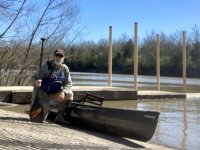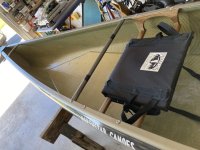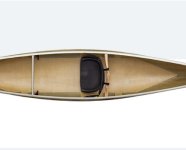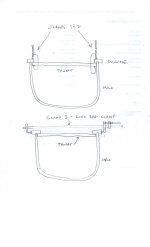Just paddling the Phoenix for the first time. First paddle with new shoulder.
The only problem is the rear thwart, which is too close to the seat to recline to a comfortable position. I have 3 choices:
1. Move the thwart back a couple inces to accommodate the back saver
2. Move the seat back 3” and eliminate the thwart or move it back 5”.
3. Do nothing and suffer with my Crazy Creek type backrest instead of the back saver.
There are advantages and disadvantages with each course. Any thoughts?
The only problem is the rear thwart, which is too close to the seat to recline to a comfortable position. I have 3 choices:
1. Move the thwart back a couple inces to accommodate the back saver
2. Move the seat back 3” and eliminate the thwart or move it back 5”.
3. Do nothing and suffer with my Crazy Creek type backrest instead of the back saver.
There are advantages and disadvantages with each course. Any thoughts?

Attachments
Last edited:



